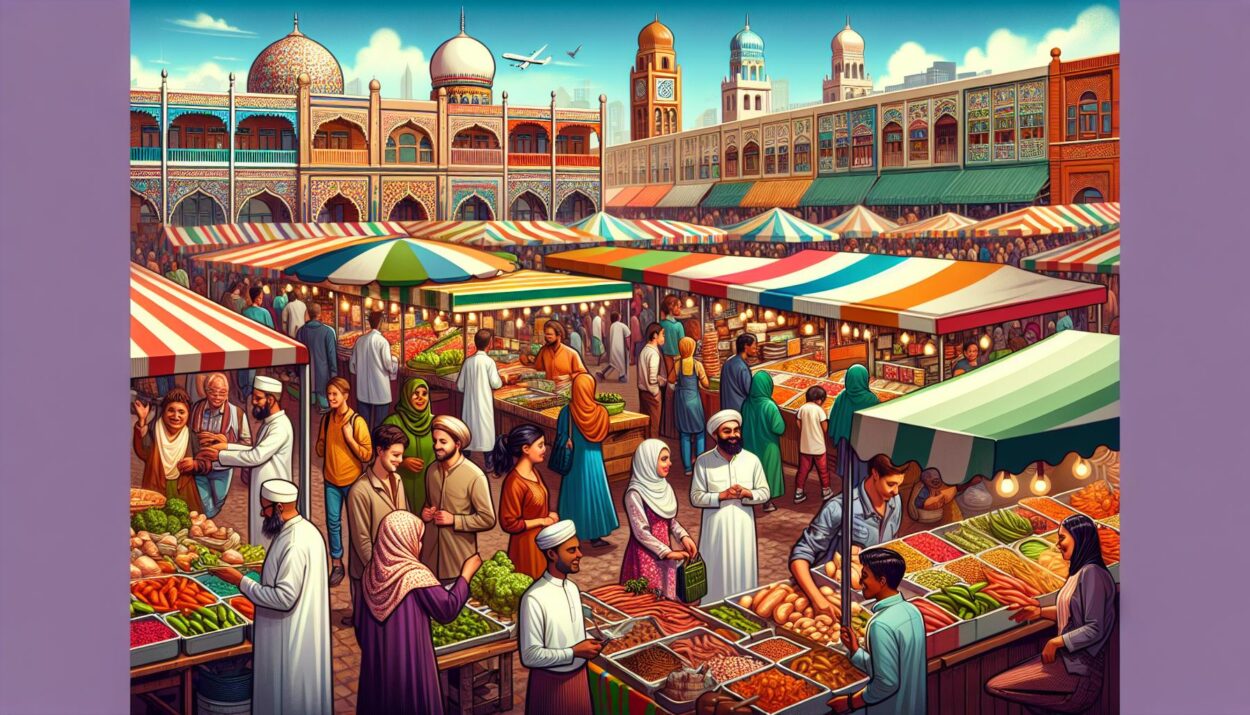Exploring Detroit’s diverse neighborhoods is like uncovering hidden gems within a bustling city. Each area boasts its own unique charm, history, and attractions, making Detroit a mosaic of cultures and experiences. From the historic elegance of Corktown to the artistic vibes of Midtown, there’s a corner of Detroit that speaks to everyone’s heart.
As someone who’s navigated the streets of Detroit, I’ve come to appreciate the distinct personality each neighborhood offers. Whether you’re a foodie, art enthusiast, or history buff, Detroit’s neighborhoods are ready to welcome you with open arms. Let’s dive into the heart of the Motor City and discover what makes each area so incredibly special.
Corktown: Detroit’s Historic Gem
When I ventured into Corktown, Detroit’s oldest neighborhood, the first thing that struck me was how its historic charm seamlessly blends with contemporary innovation. Known for its Irish roots, Corktown has evolved from its 19th-century beginnings into a bustling hub of culture and culinary delight.
Walking down Michigan Avenue, the neighborhood’s main thoroughfare, you can’t help but be fascinated by the beautifully preserved Victorian homes that line the streets. This area is a real testament to Detroit’s resilience and dedication to preservation. Not only does Corktown boast an array of historic architecture, but it also serves as a sanctuary for foodies. The neighborhood is home to some of Detroit’s most talked-about restaurants and breweries, making it a must-visit for anyone looking to experience the city’s burgeoning culinary scene.
One of the highlights of Corktown is the Michigan Central Station, an iconic symbol of Detroit’s golden age. Though it sat abandoned for years, plans for its restoration have ignited a new sense of hope and excitement in the community. This restoration project is a clear indicator of the neighborhood’s ongoing transformation and its significance in Detroit’s revival narrative.
For those interested in the arts, Corktown does not disappoint. Galleries and street art dot the landscape, offering a glimpse into the creative minds that call this neighborhood home. It’s this blend of history, culture, and modernity that makes Corktown a fascinating area for exploration.
As I continued to explore, it became evident that Corktown is more than just a neighborhood; it’s a vibrant community with a strong sense of identity and pride. The people here are not just residents; they’re custodians of a rich historical legacy, eager to welcome visitors into their midst.
Midtown: Where Art and Culture Collide
In my journey through Detroit’s diverse neighborhoods, Midtown stands out as an essential stop for any art lover like myself. It’s a vibrant area where culture and creativity collide, offering a canvas of galleries, theaters, and historic museums that I find utterly captivating.
One of the jewels of Midtown is the Detroit Institute of Arts (DIA), home to over 65,000 works. Walking through the DIA’s halls, I’m always struck by the breadth of its collections, spanning the globe from ancient to modern times. It’s a reminder of Detroit’s rich connection to the global art scene.
Not far from the DIA, the Museum of Contemporary Art Detroit (MOCAD) presents edgier exhibitions that challenge and inspire. MOCAD’s commitment to showcasing provocative modern art positions Midtown as a hub for innovation in the art world.
The cultural experience in Midtown isn’t limited to visual arts. The Detroit Symphony Orchestra (DSO), headquartered at the Max M. and Marjorie S. Fisher Music Center, offers a breathtaking auditory experience. Their performances span classical to contemporary, showing that high-caliber music thrives in Detroit.
But what sets Midtown apart for me is not just its institutions but the spontaneous creativity that flourishes on its streets. Public art installations, from murals to sculptures, seem to bring the very sidewalks to life. It’s as if the neighborhood itself is an open-air gallery, reflecting Detroit’s spirit of rebirth and innovation.
Beyond art, Midtown pulses with a youthful energy, fueled by local universities and an eclectic mix of bars, cafes, and boutiques. Each visit promises something new, blending the historic with the cutting-edge in a way that feels uniquely Detroit. Midtown isn’t just a place to observe art; it’s where you feel part of a living, breathing conversation between the past and the future.
Greektown: A Taste of Detroit’s Heritage
When I explore Detroit, Greektown always stands out as a vibrant testament to the city’s rich cultural tapestry. Nestled in the heart of Detroit, this neighborhood brims with history, tradition, and a palpable energy that’s impossible to ignore. From its colorful streets to the mouthwatering aromas wafting from its numerous restaurants, Greektown offers an authentic slice of Greek culture intertwined with Detroit’s unique vibe.
Walking down Monroe Street, the main artery of Greektown, I’m immediately struck by the blend of traditional Greek and modern American influences. Iconic blue and white flags flutter in the breeze, while neon signs illuminate the night, creating a lively atmosphere that’s both welcoming and exhilarating. The area is home to some of the city’s oldest buildings, adding a sense of history to every step I take.
One of Greektown’s undeniable highlights is its culinary scene. Known for its authentic Greek cuisine, the neighborhood offers everything from classic gyros and souvlaki to more contemporary dishes that blend Greek flavors with local ingredients. It’s not just about the food; dining in Greektown is an experience, often accompanied by live music and traditional Greek hospitality that makes you feel like family.
Beyond its culinary allure, Greektown also boasts a bustling nightlife, with a variety of bars, clubs, and the renowned Greektown Casino, adding a modern twist to the area’s traditional roots. It’s a place where the old and the new harmoniously coexist, offering something for everyone.
As I dive deeper into the heart of Greektown, it’s clear that this neighborhood is more than just a destination. It’s a celebration of Detroit’s diversity, history, and the enduring spirit of its people. Here, the past and present blend seamlessly, creating a lively cultural hub that’s both a nod to Detroit’s Greek heritage and a testament to the city’s ongoing renaissance.
Eastern Market: The Culinary Capital of Detroit
When I first stepped into Eastern Market, it felt like I’d been transported to a culinary hub that’s pulsating with energy and flavors. Nestled just a stone’s throw away from Detroit’s bustling downtown, Eastern Market has long been the heart and soul of Detroit’s food scene. Here, I found a vibrant community of farmers, artisans, and chefs, all dedicated to providing the freshest, highest-quality products.
The market is open year-round, but it truly comes to life on Saturdays. This is when thousands of locals and visitors alike converge to explore over 225 vendor stalls. From fresh produce, exquisite cheeses, to artisanal bread and pastries, Eastern Market has it all. I was particularly amazed by the diverse array of meats and seafood available, showcasing the best of what Michigan and its surrounding areas have to offer.
But Eastern Market is more than just a place to buy groceries. It’s a cultural institution where you can immerse yourself in Detroit’s rich culinary traditions. The district is dotted with iconic eateries and cafes, each with its own story to tell. I made it a point to dive into some of the finest BBQ ribs in the city, followed by a hearty breakfast at a century-old diner that felt like taking a step back in time.
What truly sets Eastern Market apart, however, are the special events that pepper the calendar year. From the bustling Flower Day in spring, bringing together the most extensive collection of flowers and plants, to the vibrant murals and street art that celebrate Detroit’s artistic spirit, Eastern Market is a place of constant evolution and joy.
In addition to the culinary delights, the market is a focal point for community engagement and sustainable living. Efforts to support local farming and food distribution underscore the market’s role in Michigan’s agricultural landscape. Initiatives like food-rescue programs and cooking classes aim to educate and inspire, reinforcing the market’s commitment to fostering a healthier, more connected community.
Conclusion
Detroit’s neighborhoods offer a rich tapestry of experiences that cater to every interest. From the historic charm of Eastern Market to the innovative and community-driven initiatives it fosters, there’s no shortage of reasons to explore and fall in love with this city. It’s clear that Detroit is more than just a place on the map—it’s a vibrant community full of life, culture, and culinary excellence. Whether you’re a local rediscovering your city or a visitor experiencing it for the first time, Detroit invites you to be part of its ongoing story. So, pack your curiosity and appetite, and dive into the heart of Detroit’s neighborhoods. You won’t be disappointed.



